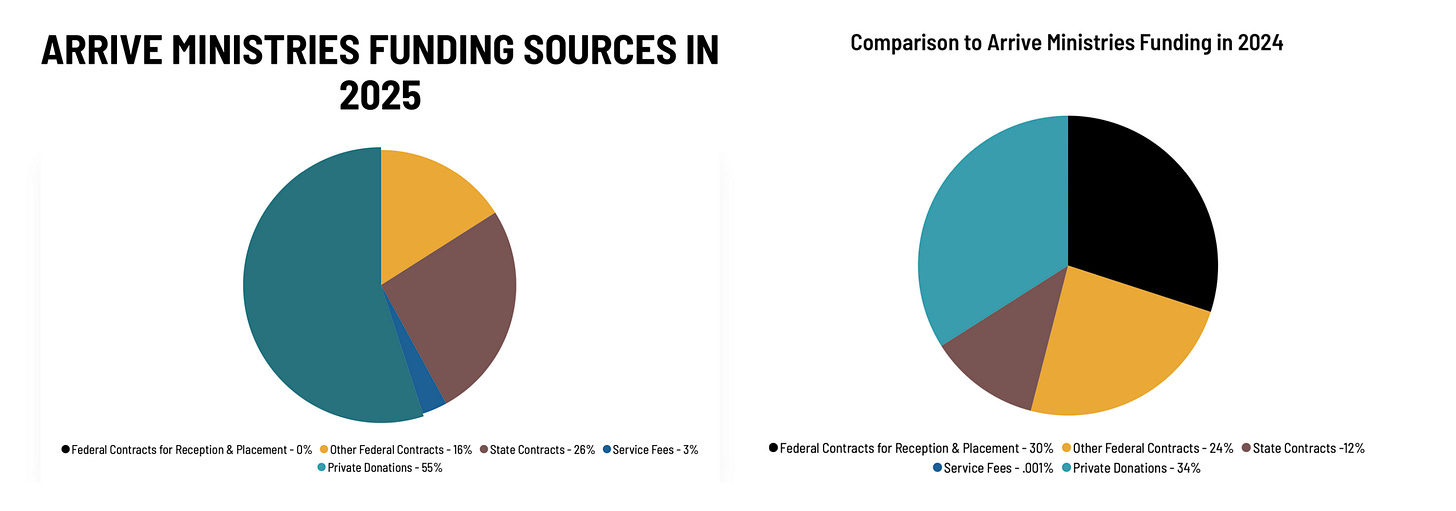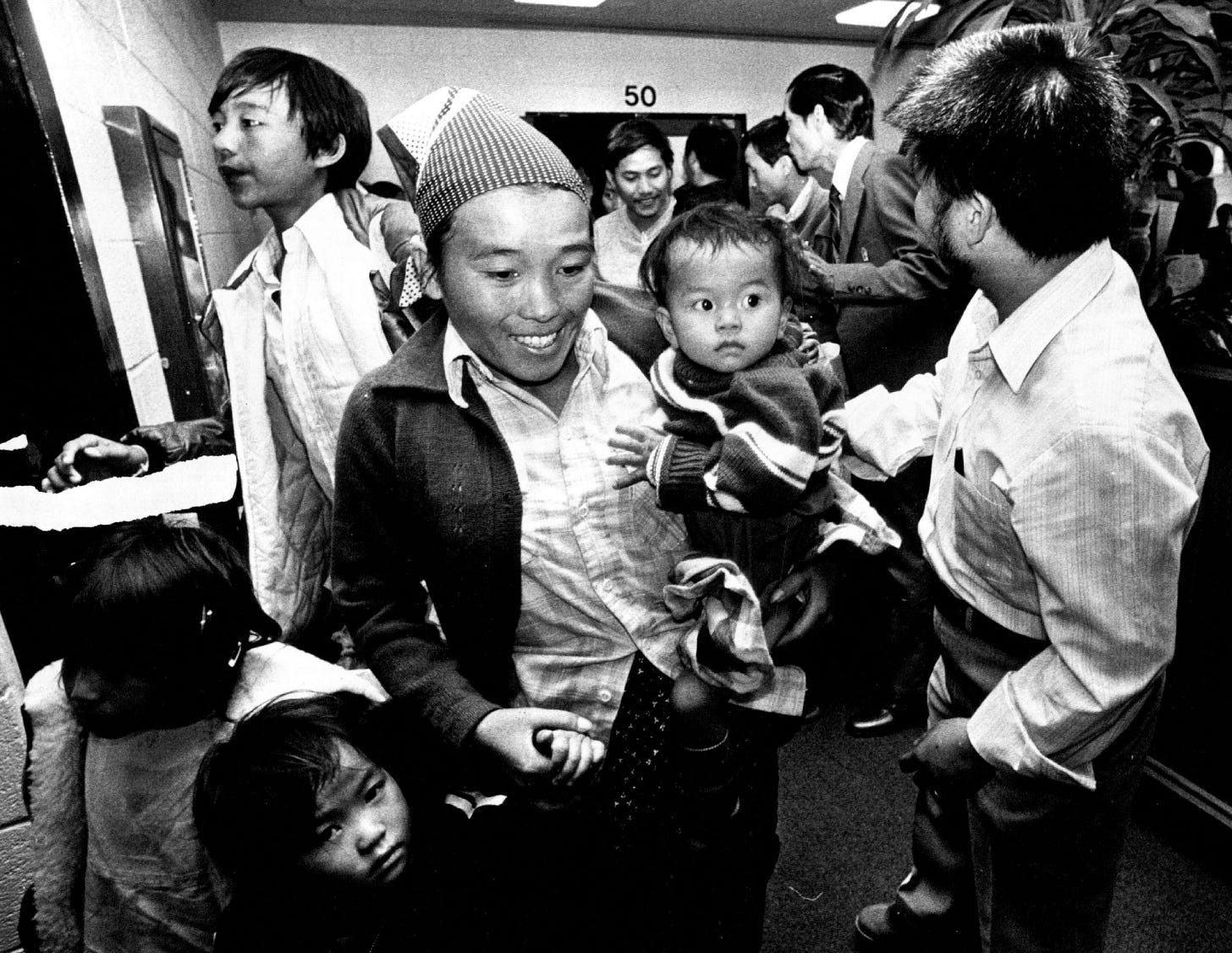Minnesota & Using the Past to Guide our Present: Resettlement at Risk
Minnesota's history of welcome can inform how we approach advocacy today.
Resettlement is Shrinking in Minnesota
Three of Minnesota’s seven resettlement providers will be ending their resettlement programs by October: the Minnesota Council of Churches (MCC), Catholic Charities of Southern Minnesota, and the United Community Action Partnership (UCAP).
The cities of Rochester (House District 1) and Marshall (House District 7) will lose their ability to resettle refugees entirely—with little word from either city council.
Additionally, the Twin Cities Refugee Consortium has paused meetings indefinitely.
Funding cuts, arrivals suspensions, and nationality-based bans are contributing to the fracturing of Minnesota’s resettlement system.
Federal Support Needed to Survive

As federal funds decline, so too does Minnesota’s ability to resettle refugees.
While state and private funding continue to support refugee integration efforts, Minnesota’s resettlement agencies have repeatedly emphasized the importance of reliable federal support.
On March 20th, the Twin Cities Refugee Consortium wrote in their suspension announcement:
“[T]he Reception & Placement program has ended at all four metro agencies. Many have been forced to lay off staff and have been forced to leave newly-arrived refugees without the resources they are normally entitled to. Referrals are being made to services funded by the state of Minnesota DHS Refugee Programs Office or mainstream services, though there are not any existing services that fully fill the need. Due to unstable reimbursement from the federal government (despite standing contracts), some agencies have had to lay off more staff and refer out/prematurely close the cases of families who were enrolled in Matching Grant and Preferred Communities programs.”
The Minnesota Council of Churches echoed this sentiment:
“While we are encouraged that Minnesota has not eliminated or reduced state-funded contracts for organizations like MCC to help refugees transition well into Minnesota life, the hard truth is that we depend on federal dollars to amplify and sustain our work.”
Minnesota has been here before. The impending end of nearly half of Minnesota’s resettlement programs mirrors the nationwide closures of resettlement offices that occurred during the last Trump Administration.
We can’t let it happen again—again.
The Travel Ban & Repetitions of History
Office closures aren’t the only repetition of history Minnesotans are experiencing.
Even when resettlement resumes—as ordered by the courts—Trump’s most recent travel ban will heavily impact which refugees are able to build new homes in Minnesota.
Arrive Ministries, located in Richfield, noted that more than half of the refugees that they resettled last year “were men, women, and children who were forced to flee homelands included on this travel restriction list.” Minnesotan families were separated by Trump’s first travel ban; undoubtedly, more Minnesotan families will be separated by the second.
If we want to avoid future repetitions of history, we need to look to the past—Minnesota’s past—to shape a different future.
Minnesota’s History of Welcome
The International Institute of Minnesota just celebrated its fiftieth anniversary—and the anniversary of resettlement in Minnesota.
Half a century ago, in the wake of the Vietnam war, Minnesota received the largest population of Southeast Asian refugees in the Midwest. Many of these refugees were welcomed through “an ad hoc approach to resettlement”—also known as parole.

To ensure these new Minnesotans were able to find safety and success in their new communities, Minnesota Governor Wendell Anderson (D) established the Indochinese Resettlement Office (which later became the Refugee Programs Office in 1981) and the Indochinese Refugee Task Force.
These bureaucracies addressed “longer-term resettlement issues, standardize(d) refugee assistance, and offer(ed) follow-up services to refugees after their arrival.”
Governor Anderson’s leadership laid the foundation for five decades of resettlement in Minnesota—and contributed to the creation of the U.S. Refugee Admissions Program as we know it today. As America developed a systematic approach to resettlement, Minnesota’s efforts to institutionalize state support played a guiding role in the development of The Refugee Act.
One of Governor Anderson’s successors, Governor Quie (R), was cited as expressing “considerable interest in enhancing [his] state’s efforts” to resettle refugees as Congress was debating The Refugee Act. He actively corresponded with the Chairperson of the House Subcommittee on Immigration as the bill was drafted, highlighting the state’s success and need for additional federal structure and support.
His remarks echo the words of resettlement agencies today:
“Our voluntary agencies have done an outstanding job of finding homes and providing follow-up services. Federal funds are also critical to the success of our program…There is a continuing federal responsibilities for funding refugee assistance.”
Governor Quie knew the importance of federal reliability when it came to resettlement. Minnesota’s current political leadership—Governor Walz, Senators Klobuchar and Smith, the State’s eight House representatives, local mayors—need to advocate for federal support, too.
Minnesota’s Congressional Delegation
Minnesota’s Congressional delegation has largely continued the state’s tradition of welcome, from Senator Klobuchar’s unwavering commitment to securing a pathway to adjustment for our Afghan Allies to Representative Omar’s fight for immigrant rights.
While Minnesota’s Congressional delegation includes prominent advocates for refugees, they have a long way to go when it comes to supporting a resettlement floor. Senator Klobuchar sponsored the GRACE Act in 2019, but not in 2024. In the House, only Representative McCollum has ever sponsored the GRACE Act—and only in 2019. Two other House members have also supported a similar proposal.
Representatives Finstad, Fischbach, and Omar all represent offices ending their resettlement programs—and have never co-sponsored a resettlement floor.
Senator Smith is the only member from Minnesota who co-sponsored the most recent version of the GRACE Act.
Opportunities for Advocacy
Minnesota hosts a strong network of refugee advocates engaged in meaningful work that can be leveled up in support of a resettlement floor.
The Minnesota Council of Churches —who has welcomed over 100,000 refugees since 1970—recently presented on refugee contributions to Minnesota’s economy at a Workforce Summit hosted by Greater Mankato Growth. Similar engagements could be used to build employer support for a resettlement minimum.
The International Institute’s incredibly successful workforce development programs can show Minnesota’s representatives what they lose when they lose resettlement. Just last year, IINM supported seven international physicians in obtaining local residencies and 72 clients in obtaining higher education degrees or diplomas. Almost 50% of job placements by IINM filled the state’s critical labor shortages.
Lutheran Social Services administers a robust state legislative advocacy program, complete with constituent trainings that offer CLE credits. These efforts can connect both local representatives and constituents to GRACE advocacy. A resolution currently under consideration by the state legislature, H.R. 5, celebrates Minnesota’s proud history of welcome and, critically, calls for Minnesota’s federal delegation to “prioritize comprehensive immigration policy reform.”
When state legislators formally document their communities' positive experiences with refugee resettlement and explicitly call on their congressional delegations to support guaranteed refugee admissions, they create the political cover that federal representatives need to champion the GRACE Act.
The Twin Cities Refugee Consortium could resume meetings, pivoting their objectives from coordinating services to coordinating regional advocacy for GRACE.
A bottom-up approach—from successful local programs to state legislative endorsements to federal policy change—offers advocates in every state a concrete pathway to build the coalition necessary to make the GRACE Act law.
Learning from Minnesota
Fifty years ago, Minnesota’s forward-thinking, inclusive, whole-of-community approach created a resettlement infrastructure that worked—both locally and federally. And it worked not only for resettled communities and for Minnesota’s economy, schools, churches; it worked to build political leadership for resettlement.
The genius of Minnesota's model wasn't just in its immediate effectiveness—it was in its ability to create a self-reinforcing cycle of support. When refugees succeeded, they became advocates. When communities saw the benefits firsthand, they became champions. When local leaders witnessed the economic and cultural contributions, they became vocal supporters at every level of government.
This sustainable approach stands in stark contrast to the current federal system's vulnerability to political shifts. While Minnesota's refugee communities have continued to thrive and contribute for decades, the federal infrastructure supporting resettlement has been repeatedly dismantled and rebuilt depending on who occupies the White House.
The human cost of this instability is measured not just in closed offices and lost jobs, but in the 20-year waits that have stretched even longer, in the families that remain separated, and in the allies who served alongside American forces but cannot find safety.
Minnesota's example can show us the way forward.
Through sustained commitment, comprehensive support, and political leadership that spans from local to federal levels, we can rebuild a resettlement system that works for everyone.
The GRACE Act provides the federal framework; communities like Minnesota provide the proven model.
Together, they offer a path toward the kind of systematic, sustainable approach to refugee resettlement that America needs and deserves.
The blueprint exists.
Now we need the collective will to scale it nationwide.
Thanks for reading Save Resettlement.
Next Week, Michigan & Raising our Collective Voices
In the meantime, read more about how Minnesota’s Hmong community through a wonderful series from Minnesota Public Radio continuing throughout June.




